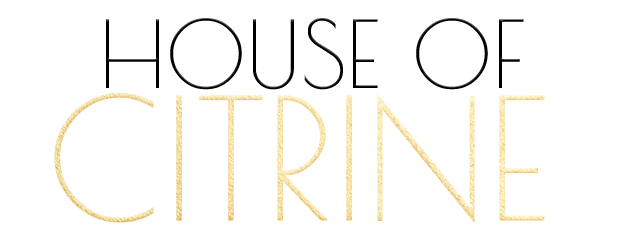While running through the California wildflower fields, a vibrant golden blanket appears along the hillside. With further glances, these satiny flora would remind one of a chalice used to drink the sweet nectar of grapes. They also bring ones mind to an enchanted wonderland, where the Mad Hatter and March Hare could be found amongst the meadows, drinking tea out of these deep orange cups and the Dormouse would be nuzzling and napping into the blossoms of lively pollen. The irony, however, is that these sun worshipping flowers are illustrious for their calming and tranquilizing qualities, supporting the soul’s reception to consciousness and light.
The state flower of California, perennial in warm climates and represented with the element of Fire, the California Poppy is a member of the Papaveraceae family. It ranges in color from bright yellow to deep orange, creating a spectrum of sunsets. It is also the cousin of the notorious Opium Poppy, but before you get nervous, note that the California Poppy is a perfectly safe, non-addictive plant that contains no opiates, and is even suitable and highly recommended for children with sleep issues or temperamental tendencies. It is similar to the Opium Poppy, but has an array of alkaloids that provide much milder sedative properties, by gently establishing equilibrium in the nervous system. The California Poppy is tremendous for stress and anxiety and is widely used for mental health problems in western herbalism. It can be primarily found growing wild in its native habitats across the western states, including the Sonoran Desert and up the coastline from Baja California into Canada. The California Poppy also has extensive cultural significance to many indigenous tribes. To name a few, the Chumash, Pomo, Cahuilla, and Costanoan people traditionally ate the leaves as greens, would crush the plant into vulnerary compresses and even used the root for other topical and internal pains. The Luiseno Indians would munch on the flowers to create chewing gum and the Kitanemuk people traditionally rolled the roots directly onto their gums for toothaches.
The California poppy is an essential plant to have stored in your herbal armamentarium. Its radiance of light helps relieve and lose interest in your stress, bringing a sense of tranquility to the heart as it counteracts nervous system imbalances. It is also fantastic for those with insomnia and repetitive worrisome thoughts. Antithetically, those mad Wonderland tea partiers would actually benefit from the harmonizing and sedating effect of the California Poppy that situates around the heart.
Phytochemistry: flavone glycosides, berberine, sanguinarine, protopine, and allocryptine
Herbal Actions: nervine, hypnotic, anti-spasmodic, anodyne, analgesic, sedative, anxiolytic
How to Prepare: tea, tincture, poultice, compress, cook into olive oil for hair tonic, boil or roast leaves as vegetative meal, pollen for cosmetics, smoke, diffuse
What to Use For: nerve stress and excitability, anxiety and panic attacks, insomnia, pain relief, headache, sores, ulcers, toothache, colic, sciatica, shingles, menstrual cramping, intestinal spasm, relaxes blood vessels, nervous palpitations, hypertension, suppress lactation, bedwetting, restless leg syndrome, ADD/ADHD, memory concentration
Growing Conditions: Extremely hardy and drought tolerant, they thrive in nutrient deficient, dry soil and require very high sun. They grow in zones 6-10, so if feasible, simply throw seed around your yard in the fall, and the plants will bloom after winter rains. It is that simple. The summer heat will kill them, but they will propagate and eventually germinate on their own.
Harvesting Methods: They bloom most heavily from March to May, however, between June and September are the months to collect the aerial parts of the plant for medicinal use.
Parts of Plant Used: whole plant, flowers, leaves, pollen, seeds
*Avoid in pregnancy and breastfeeding*
Soothing Sleep Tincture
1 part dried valerian root
1 part dried california poppy
1 part dried chamomile
1/2 part dried blue vervain
1/2 part dried wild lettuce
few tbs of raw honey (for taste)
Raw organic Apple Cider Vinegar**
Glass canning jar with airtight lid (I like Mason Jars best)
Add about 7 oz (1 tbs to .05 oz) of dried herb to 33.8 oz (1 liter) of apple cider vinegar (make sure to warm the vinegar first). The liquid should rise about 2 or 3 inches above herbs almost to the rim of the jar. Stir the mixture together and subdue the herbs. Make sure the lid if firming set when finished. Label the jar with the ingredients and start date. Place in a dark, warm location like a cupboard for 4 to 6 weeks (the longer the better). Try your best to the shake bottle daily during this maceration period. The brilliant Rosemary Gladstar has said that shaking the bottle brings old magic into your medicine making. With shaking, she believes that you should connect with your herbs by singing, stirring them in the moon or sunlight, wave feathers at them, or really do whatever your heart and imagination calls to.
When ready, strain the herbs with stainless steel strainer lined with cheesecloth and reserve the liquid into small tincture bottles. Use between 1-3 droppers full of this tincture, as needed, about an hour before bed.
Here is a great reference for tincture making
This information is not a replacement for a medical professional, so please consult before treating yourself or others with this or any other herbal remedy
Molly Helfend is part of the HOC team and is a writer, ethnobotanist and environmental activist. She graduated from University of Vermont in 2016 with a Bachelor of Science in Environmental Studies and a concentration in Holistic Health and recently from University of Kent in 2018 in Canterbury, England with a Masters of Science Degree in Ethnobotany. She has worked for Urban Moonshine, Greenpeace and received her herbalism training with Spoonful Herbals. Her goal is to travel the world, researching plant-human interconnected relationships while continuing to educate about the transformational energy of life. Molly resides in Raglan, New Zealand and Santa Cruz, California.









